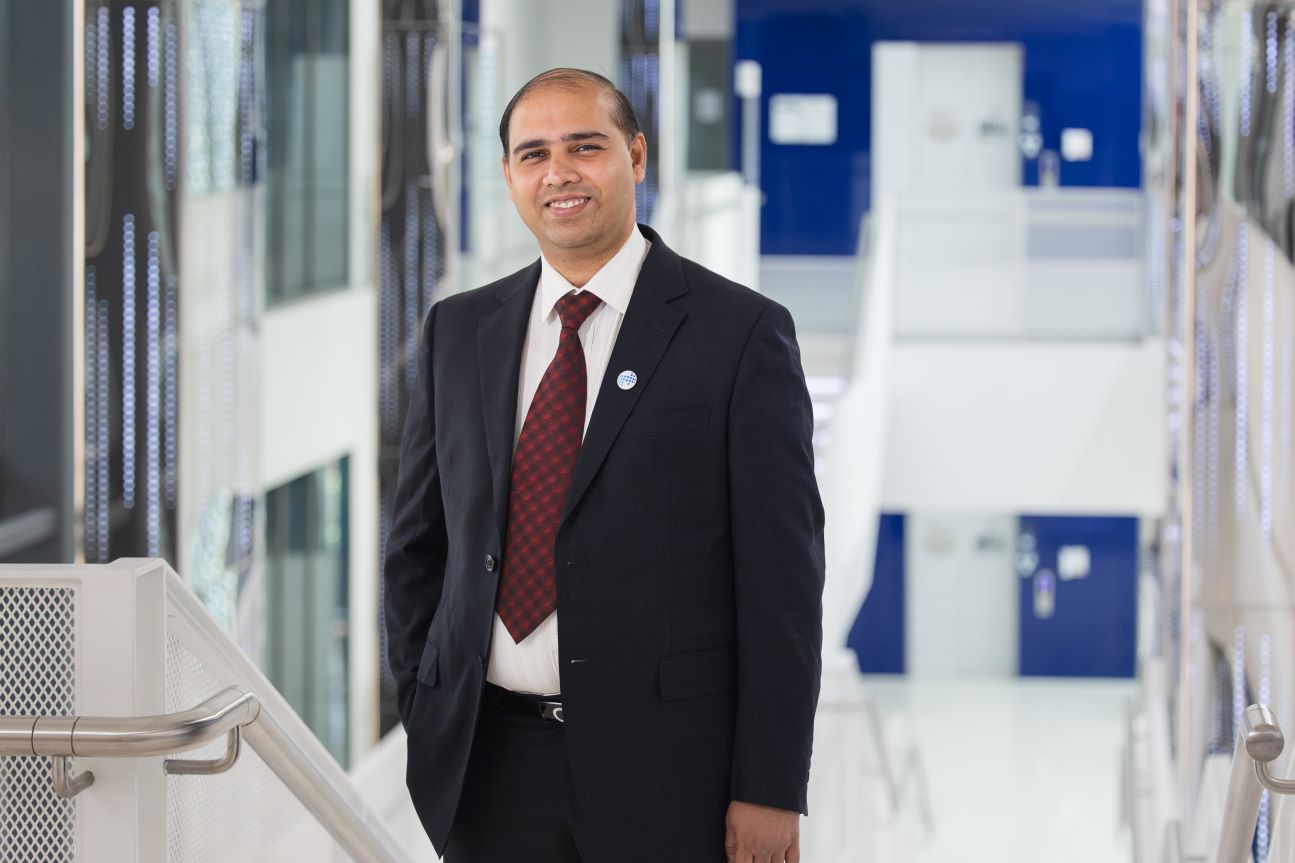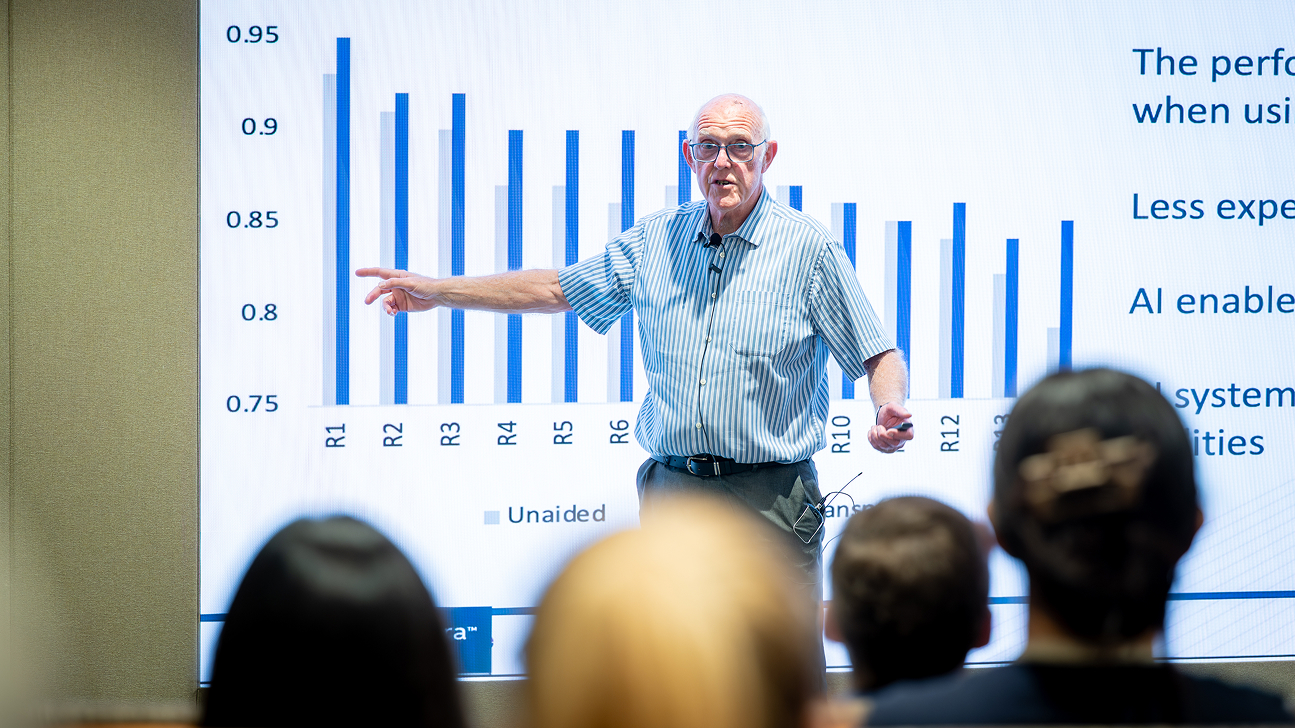Aligning research and student careers
Tuesday, February 08, 2022

Dr. Karthik Nandakumar is excited to be conducting in-house research with his students at MBZUAI and he aims to give them the best start possible to their careers. After 15 months with the university as an Associate Professor in the Computer Vision department, Nandakumar aligns their research with the UAE’s strategic goals to leave a lasting impact on the real world. The opportunity to join the world’s first AI university came about through a connection with his Ph.D. supervisor and MBZUAI board member, Anil K. Jain. Prior to joining MBZUAI, Nandakumar worked as researcher/scientist in video surveillance and blockchain with IBM Singapore and the Institute for Infocomm Research at A*STAR.
Research and industry solutions
As part of the SPriNT-AI (Security, Privacy and Trustworthiness in Artificial Intelligence) lab – which he leads – he is guiding students to develop secure, privacy-preserving, and trustworthy machine learning algorithms and AI systems focusing on application-based outcomes. The lab conducts tangible research for industries including energy, health, and security.
“AI can be useful for anomaly detection in many applications such as monitoring solar power plants, gas pipelines, electrical lines, and nuclear power stations,” Nandakumar explained.
One of the current research projects underway is investigating drone surveys for solar plants, in collaboration with Masdar. The modified drones need to be able to successfully detect defects and cleaning requirements and provide data to optimize energy outputs.
“From video images, we are trying to classify whether there are any abnormalities. Is there any defect in the solar panels? Or is it getting dirty because of dust accumulation, soiling and so on And then how do you come up with recommendations on when to do the cleaning or when to do the maintenance?”
Drones are already being used for monitoring and surveillance, together with workable AI and algorithms, such a technology would save time and possibly reduce human error.
Biometrics, security, and privacy
“For many of these applications, you have face, fingerprint, your iris, and so on. My thesis was on using a combination of these biometrics in a more efficient and secure system. This is the reason I became interested in security and privacy research,” he said.
Currently, Nandakumar’s main research focus is on privacy and security of machine learning algorithms. He completed his Ph.D. on biometrics, specifically how to combine different biometric sources to make it more secure.
You can make deep learning algorithms accurate, but it has other issues like it is not completely secure.
MBZUAI Associate Professor of Computer Vision
For AI systems to work, they must pull data from different sources, and this is usually put into a central server. Federated learning is reinventing the machine learning model and is of interest to Nandakumar.
“Federated learning allows you to do local processing, and it means you don’t exchange the data, but rather exchange some information about the data,” he said. “It’s more privacy preserving because your data never leaves the server or your local device. The information exchange still helps to teach the model to a very good accuracy.”
This flows on to his interest in deep learning algorithms and how to make them more secure. A lot of work has been done in the past 10 years on making these algorithms more accurate, but other issues such as security are yet to be fully investigated.
“Deep learning is still in its infancy,” Nandakumar said. “It’s a technology which has been around for 30 years, but it has become popular in the past 10 years because of the availability of more computational power and more data. You can make deep learning algorithms accurate, but it has other issues like it is not completely secure.”
“And then you have resource sensitive applications, where you need to keep making them smaller, faster, more efficient, less memory, and so on. There is a long way to go before deep learning can really change applications,” Nandakumar continued.
One example is CCTV and the reliance on big operator rooms and people watching hundreds of screens. “There is a lot that has been done on how to automate processing of these videos but having worked in the industry no one is willing to buy these kinds of solutions,” Nandakumar said. “You need so much computational power to automate the processing and run it 24/7. Until there is improvement in terms of efficiency, most CCTV surveillance will remain manually managed.”
About Karthik Nandakumar
Nandakumar holds a Ph.D. in computer science, as well as two master’s degrees in computer science and statistics from Michigan State University. He also holds a master’s degree in the management of technology from the National University of Singapore.
His primary research interests include computer vision, machine learning, biometric recognition, applied cryptography, and blockchain. Specifically, he is interested in research on deep learning algorithms for biometrics and video surveillance applications as well as various security, privacy, and trust-related issues in machine learning. He has also co-authored two books: Introduction to Biometrics (Springer, 2011) and Handbook of Multibiometrics (Springer, 2006).
Nandakumar has received several awards including the 2008 Fitch H. Beach Outstanding Graduate Research Award from the College of Engineering at Michigan State University, the Best Paper award from the Pattern Recognition journal (2005), the Best Scientific Paper Award (Biometrics Track) at ICPR 2008, and the 2010 IEEE Signal Processing Society Young Author Best Paper Award.
He is a Senior Area Editor of IEEE Transactions on Information Forensics and Security (T-IFS). He was also an Associate Editor of T-IFS from 2015 to 2019 and received the 2019 Outstanding Editorial Board Member award. He is also an Associate Editor for Elsevier journal on Pattern Recognition and a Distinguished Industry Speaker for the IEEE Signal Processing Society. He is a senior member of the IEEE.
- healthcare ,
- energy ,
- computer vision ,
- nandakumar ,
- security ,
- drones ,
- deep learning ,
Related
Why 3D spatial reasoning still trips up today’s AI systems
A new benchmark by MBZUAI researchers shows how poorly current multimodal methods handle real-world geometric and perspective-based.....
- 3D ,
- spatial reasoning ,
- Vision language model ,
- benchmark ,
- neurips ,
- conference ,
- research ,
Sir Michael Brady on why healthcare AI must move from detection to articulation
Speaking as part of MBZUAI’s Distinguished Lecture series, Sir Michael Brady discussed the future of healthcare and.....
- medicine ,
- causal reasoning ,
- oncology ,
- on campus ,
- guest lecture ,
- computer vision ,
- healthcare ,
Causality meets reality: CausalVerse gives AI a harder, fairer test
A new benchmark from MBZUAI blends realism with ground truth – revealing how well causal models understand.....
- research ,
- conference ,
- causal representation learning ,
- benchmark ,
- variables ,
- causality ,
- neurips ,


